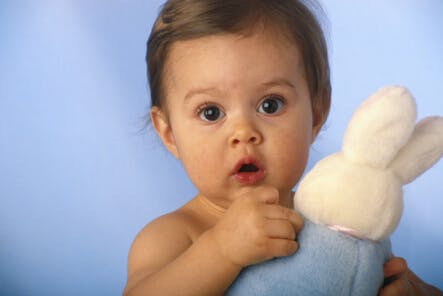Heat Rashes and Prickly Heat

Question
I think my son might have prickly heat, can you tell me what it is and what I can do about it?
Dr. Greene's Answer
Children’s skin can be quite sensitive to heat. Nursing mom’s often discover this, especially in the summertime, when their baby’s face turns red where it is against the mother’s skin. This redness comes from blood vessels in the area dilating to cool the skin down. Cooling the skin usually makes the rash disappear within hours, or even sooner.
Prickly heat (miliaria rubra) is a type of heat rash that lasts. Here the pores of the sweat glands get plugged, resulting in tiny pink bumps or even water blisters. These bumps tend to show up on covered parts of the skin, especially where there is friction from clothing. The forehead (under caps or visors), body folds, the upper back and chest, and the arms are the most common locations. It is thought that about 1-4% of infants develop prickly heat. (Pediatric Dermatology, February 2006).
Prickly heat is most common when it is hot and humid, but it can also occur in overdressed infants even during the winter. Applying oils and ointments makes prickly heat more likely (and take longer to clear up).
Often prickly heat itches, and older children describe a ‘prickly’ sensation.
The rash can look quite similar to one caused by infected hair follicles (folliculitis), but if you look at the prickly heat bumps with a magnifying glass, no hair follicles will be seen.
I’ve also seen the itchy bumps of prickly heat confused with chicken pox, or the rash from the chicken pox vaccine.
Prickly heat is treated with gentle cleansing of the skin. I like using Stri-Dex Acne Medicated Sensitive Skin Pads; the salicylic acid helps to unplug the pores. Hydrocortisone cream (not ointment) can help with itching. Sometimes antihistamines are needed for the itching (and sleep). If the rash is infected, antibiotics may also be needed. With treatment, prickly heat should disappear within 2 or 3 days.
An important note: fever can produce prickly heat, but is not caused by it – if your child has a fever, you still need to find the reason.


